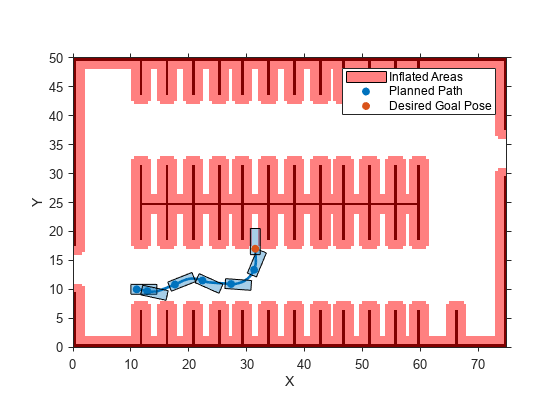plan
Plan vehicle path using RRT* path planner
Description
refPath = plan(planner,startPose,goalPose)startPose to
goalPose using the input pathPlannerRRT object. This object configures an optimal rapidly
exploring random tree (RRT*) path planner.
Examples
Input Arguments
Output Arguments
Extended Capabilities
Version History
Introduced in R2018a

